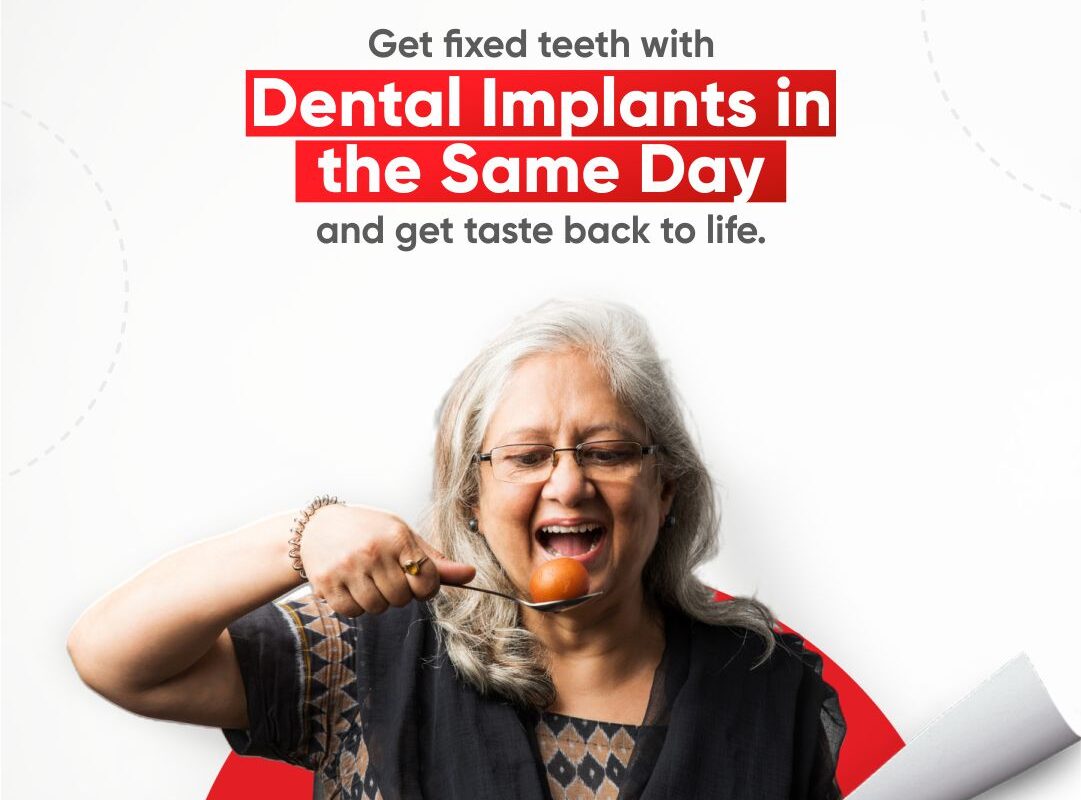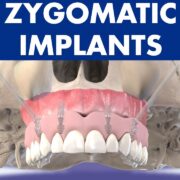Dental implants for tooth are a revolutionary and hopeful development in the field of modern dentistry, providing a life-changing means of relief for those who are facing tooth loss. Let’s take a trip to understand the function and design of dental implants, delving into the nuances that make them revolutionary in the field of oral health, under the direction of Dr. Chirag Chamria of Royal Dental Clinics.
Purpose of Dental Implants
Restoring Wholeness
Dental implants have a function in the complex field of dentistry that extends beyond simple aesthetics—namely, the restoration of completeness. Imagine the gap created by a lost tooth as if there were a jigsaw and one important component was missing. Dental implants fill in the blank by offering a long-term way to restore lost teeth and create a whole, functioning smile.
Beyond Aesthetics
Dental implants are primarily used to replace lost teeth, providing a framework for the skillful installation of crowns and bridges. With his experience at Royal Dental Clinics, Dr. Chamria highlights the importance of restoring good dental functionality in addition to creating a smile that looks great. The prosthetic tooth or bridge is stable and long-lasting because of the strong anchoring function of the titanium post that was placed.
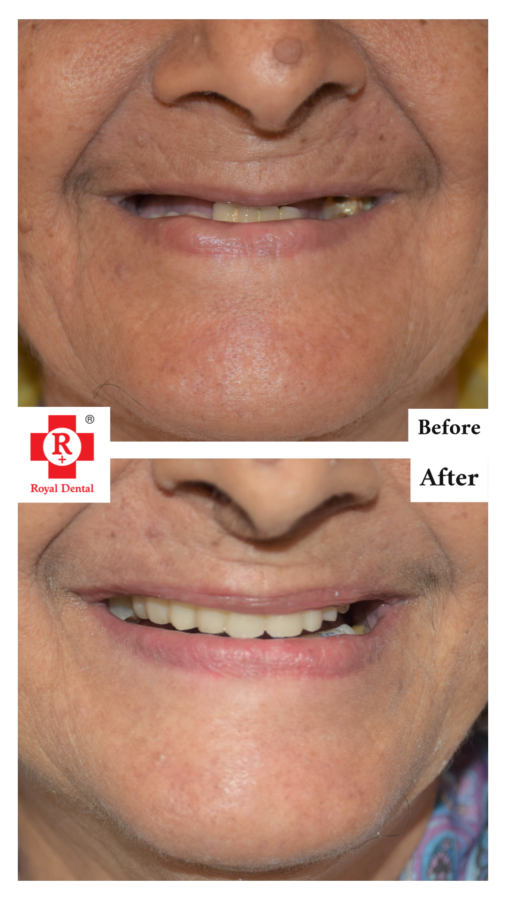
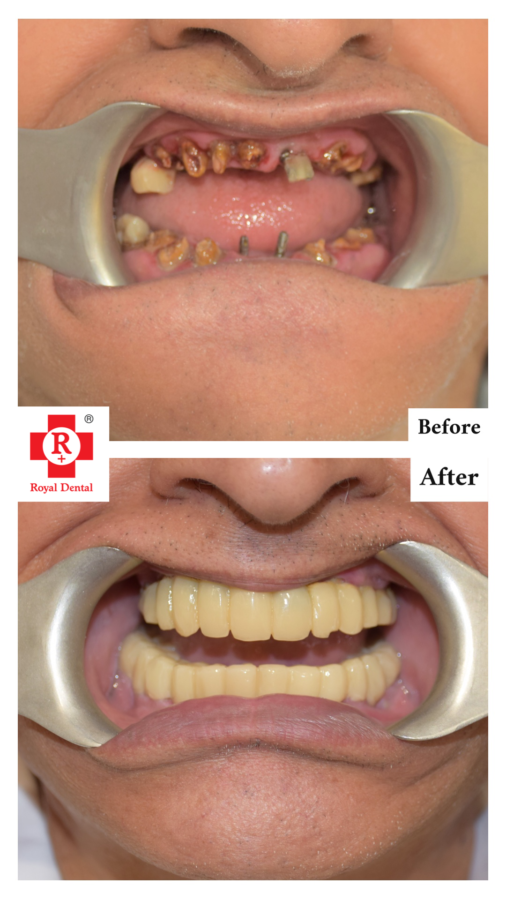
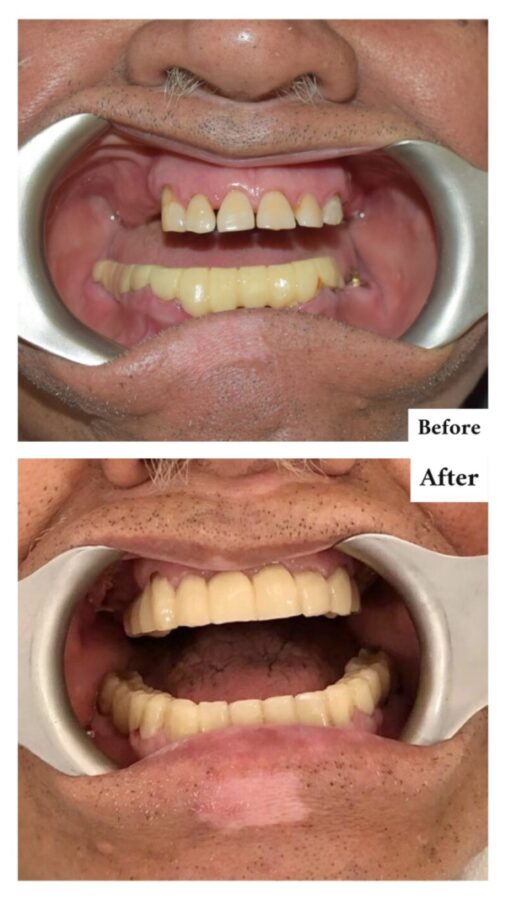
A Robust Support Network
Dental implants have developed into a reliable denture support system, going beyond the restoration of a single tooth. Implants positioned carefully provide stability and retention for overdentures, a kind of dental prosthesis. Dr. Chamria explains how this novel method gives patients a more secure and certain outcome by preventing the slippage or shifting that is sometimes connected with conventional dentures.
Overcoming Issues with Dentures
While they have their uses, traditional dentures can present problems including soreness, difficulty eating, and the ongoing need for adhesives. In this case, dental implants step up to the plate and solve these issues precisely. Their ability to support overdentures guarantees a tight fit, improving comfort and usefulness. As he walks patients through this life-changing process, Dr. Chamria explains how implant-supported dentures change the way people view traditional dentures.
Diagnostics Setup of Dental Implants
Mirror: The mirror is not merely a tool for self-reflection; in dental diagnostics, it becomes an instrument of precision. It aids in providing a clear view of the oral cavity, allowing for a comprehensive assessment of the patient’s dental landscape. It reflects not just images but insights crucial for the implant planning process.
Probe: Enter the probe, a slender yet indispensable tool in the diagnostics arsenal. It facilitates a detailed exploration of the oral environment. By measuring pocket depths and assessing the condition of surrounding tissues, it serves as a guide for determining the optimal placement of dental implants. The probe becomes the navigator, charting the course with precision.
Tweezer: In the hands of a skilled practitioner, tweezers transcend their everyday use. They are employed to handle small objects with utmost precision. From manipulating small components during diagnostics to placing and adjusting components during the implant procedure, tweezers become an extension of the dentist’s finesse.

Spoon Excavator: The spoon excavator, with its distinctive shape, takes center stage in the diagnostic setup. Its role in removing decayed or damaged tooth structure is to create a clear path for implant placement. Like a sculptor refining a masterpiece, the spoon excavator carves out clarity in the oral landscape, ensuring a clean canvas for the implant procedure.
Kidney Tray: Enter the kidney tray, a humble yet crucial organizer in the diagnostics setup. Its role is to maintain order and hygiene during the procedure. From holding and organising instruments to providing a convenient space for waste disposal, the kidney tray ensures a seamless and organised diagnostic environment.
More tools for Diagnostics Setup of Tooth Implants
Gauze: Gauze, a simple yet effective tool, takes on a pivotal role in maintaining a dry and clear field during diagnostics. This inconspicuous substance helps to absorb extra saliva and blood, providing a clean surface for careful inspection. It turns into a silent collaborator in reaching an accurate diagnosis.
Cotton Holder: Precision extends to the finest details, and the cotton holder plays a significant role in this regard. Using this instrument, cotton rolls are applied and held with delicacy. It helps isolate particular regions and offers a regulated, dry environment for precise diagnosis. When it comes to dental implants, the cotton holder guarantees exact attention to detail.
Waste Receiver: A seamless diagnostic setup incorporates efficiency, and the waste receiver plays a vital role in streamlining the process. This container guarantees the quick and clean removal of spent materials. It helps keep the dentist’s desk clear of clutter so they may concentrate entirely on the finer points of diagnosis.
Surgical Setup of Dental Implants
Lignocaine 2% Injection and Spray: In the realm of surgical setup, lignocaine takes center stage as the anesthesia maestro. Dr. Chamria explains how the 2% lignocaine injection ensures a pain-free experience for the patient, while the spray form serves as a topical anesthetic, further enhancing comfort during the dental implant procedure.
Syringe: The syringe, a seemingly straightforward tool, becomes a precision instrument in the surgical setup. Its role in the controlled administration of anesthesia and other necessary solutions ensures accuracy and patient comfort throughout the implant procedure.
Scale: Precision extends to measurements, and the scale emerges as a vital tool in the surgical setup. It aids in precise measurements, guiding the placement of dental implants with accuracy, and ensuring the alignment and spacing meet the desired specifications.
Glass Bowl: The humble glass bowl plays a pivotal role in maintaining a hygienic surgical environment. Its use for holding and sterilizing instruments, contributing to a sterile field, is crucial for the success of the implant procedure.
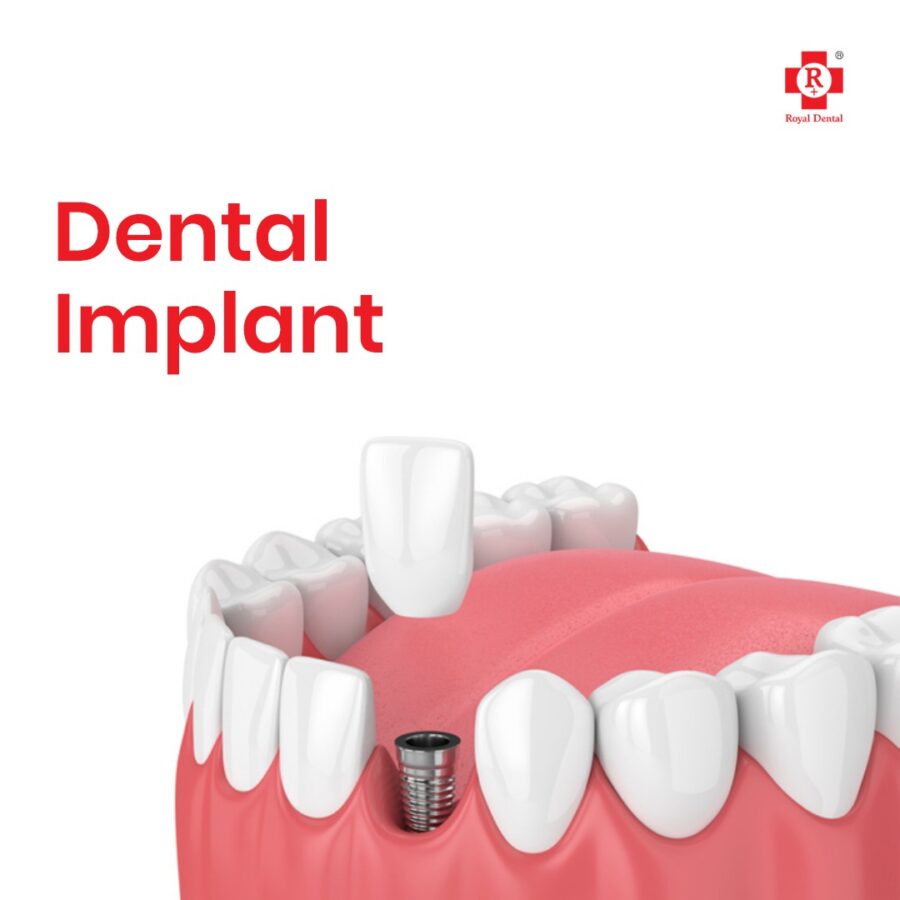
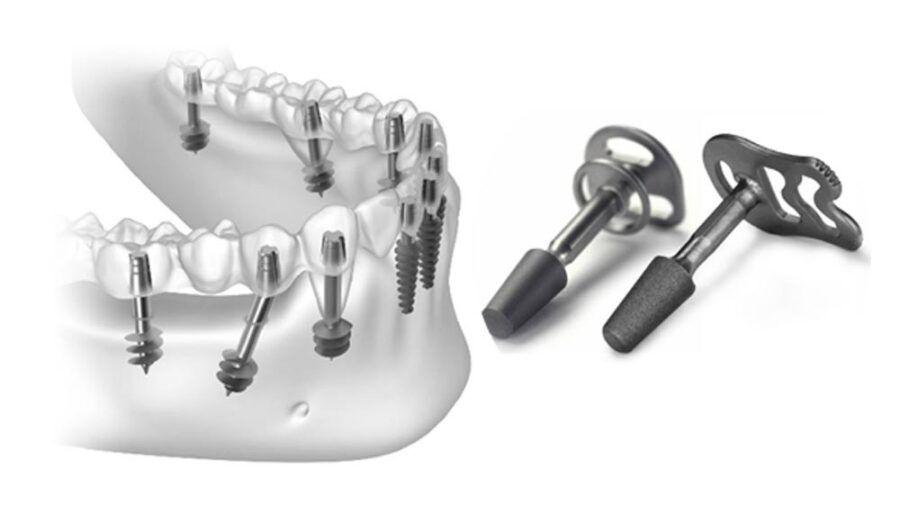
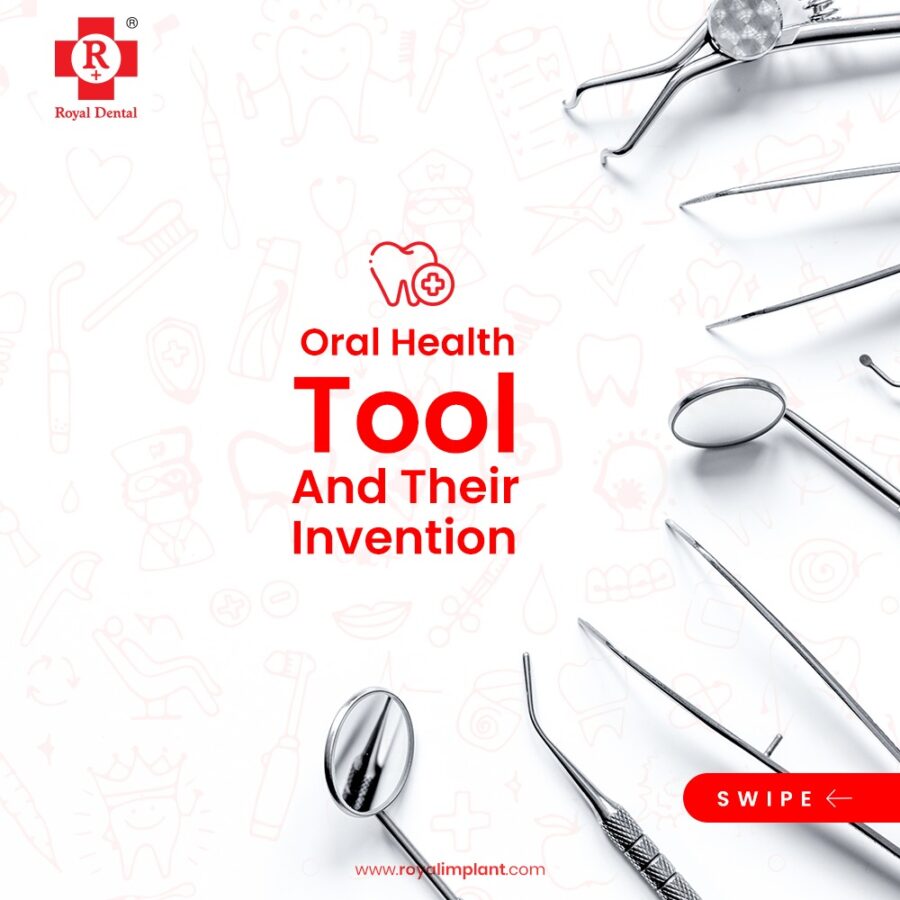
More instruments for Surgical Setup of Dental Implants
Implant Handpiece and Burs: Enter the implant hand piece and burs—the dynamic duo in the surgical setup. Dr. Chamria details their role in preparing the implant site with precision. The hand-piece, akin to a sculptor’s tool, operates with finesse, guided by implant burs designed for accuracy in shaping and creating the perfect foundation for the implant.
Implant Hand Key: The implant hand key becomes the conductor’s baton in the surgical symphony, turning with precision to place the tooth implants securely. Its significance lies in the hands of a skilled practitioner, who ensures that the implant is positioned with accuracy and stability.
Tetanus Injection Vial: In the spirit of preventive care, the tetanus injection vial finds its place in the surgical setup. Dr. Chamria emphasizes its role in ensuring patient safety by providing a layer of protection against potential infections during the implant procedure.
Normal Saline and Syringes: Normal saline, accompanied by syringes, emerges as a dynamic duo for rinsing and maintaining a clean surgical field. This combination aids in flushing debris, cooling the implant site, and contributing to overall surgical precision.
Tooth Implants: These meticulously crafted devices, tailored to each patient’s needs, represent the culmination of the surgical setup. Their successful placement is the ultimate goal, bringing the symphony of precision to a harmonious conclusion.
Composite Setup (After the Implant is placed)
- Etch creates micro-irregularities on the tooth surface for enhanced bonding of the composite material.
- Bond, applying adhesive to establish a strong connection between the tooth and the composite material.
- Q-tip precision applicator for controlled application of etchant and bonding agents.
- Composite flowable, viscous composite resin for intricate, detailed areas requiring precise placement.
- Composite packable is a denser composite material for building up larger surfaces or areas with more structural demand.
- Light-curing the composite material using a specialized light source for hardened, durable results.
- Eye Shield Protective Gear ensures safety during the curing process by shielding the eyes from the curing light.
- Composite Instruments specializes in tools for shaping, contouring, and sculpting the composite material for a natural, aesthetic finish after implant placement.
Conclusion
One thing becomes obvious as we approach the end of our journey into the world of dental implants, led by the knowledge of Dr. Chirag Chamria: a smile is more than simply a curve; it’s a reflection of one’s self-worth and general well-being. When properly crafted and positioned, dental implants provide hope to people looking for a long-term replacement for lost teeth. Patients may confidently traverse this life-changing experience with the help of Dr. Chamria’s insights, knowing that Royal Dental Clinics has skilled dentists taking care of their smiles. Accept the transformation and the powerful smile.

